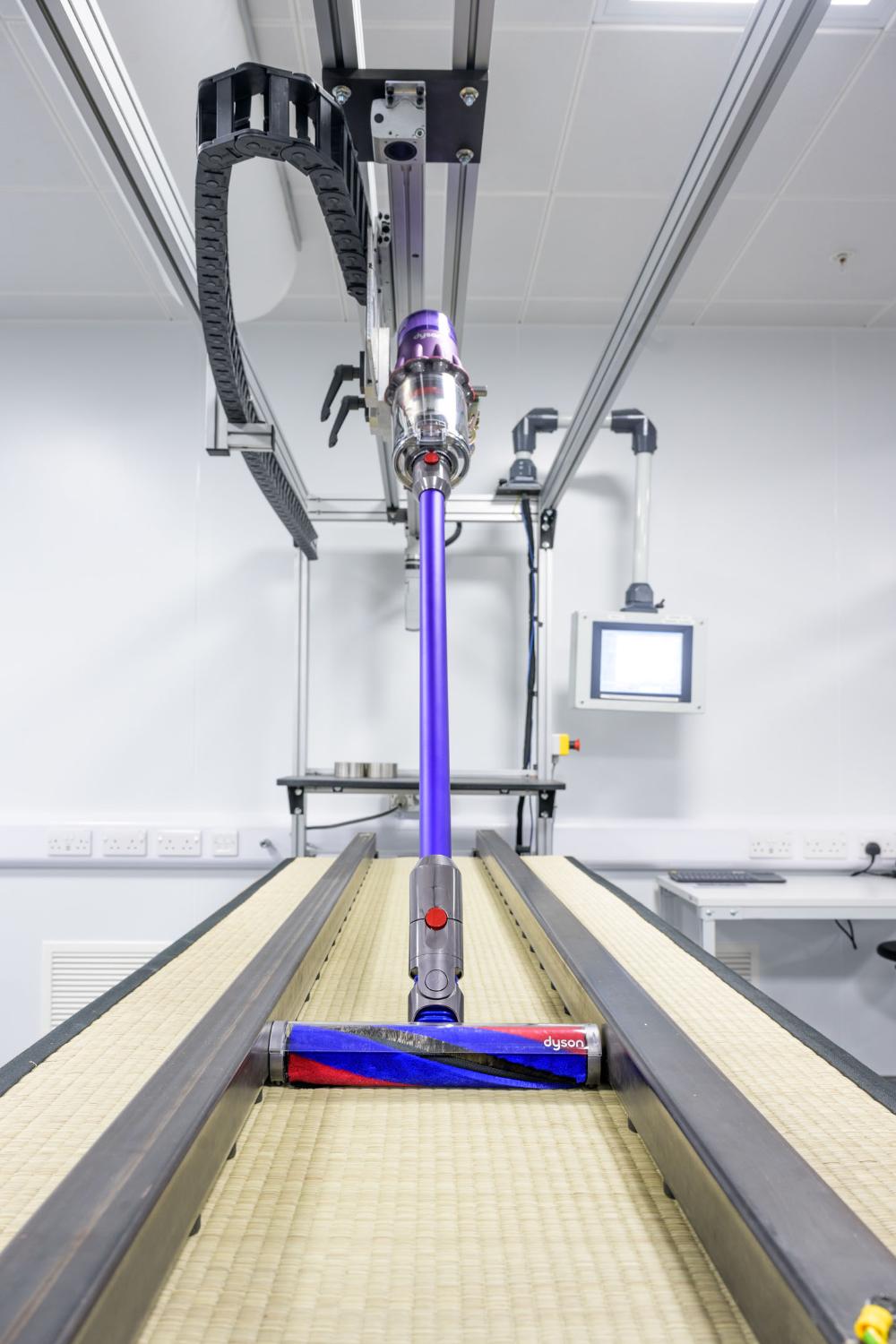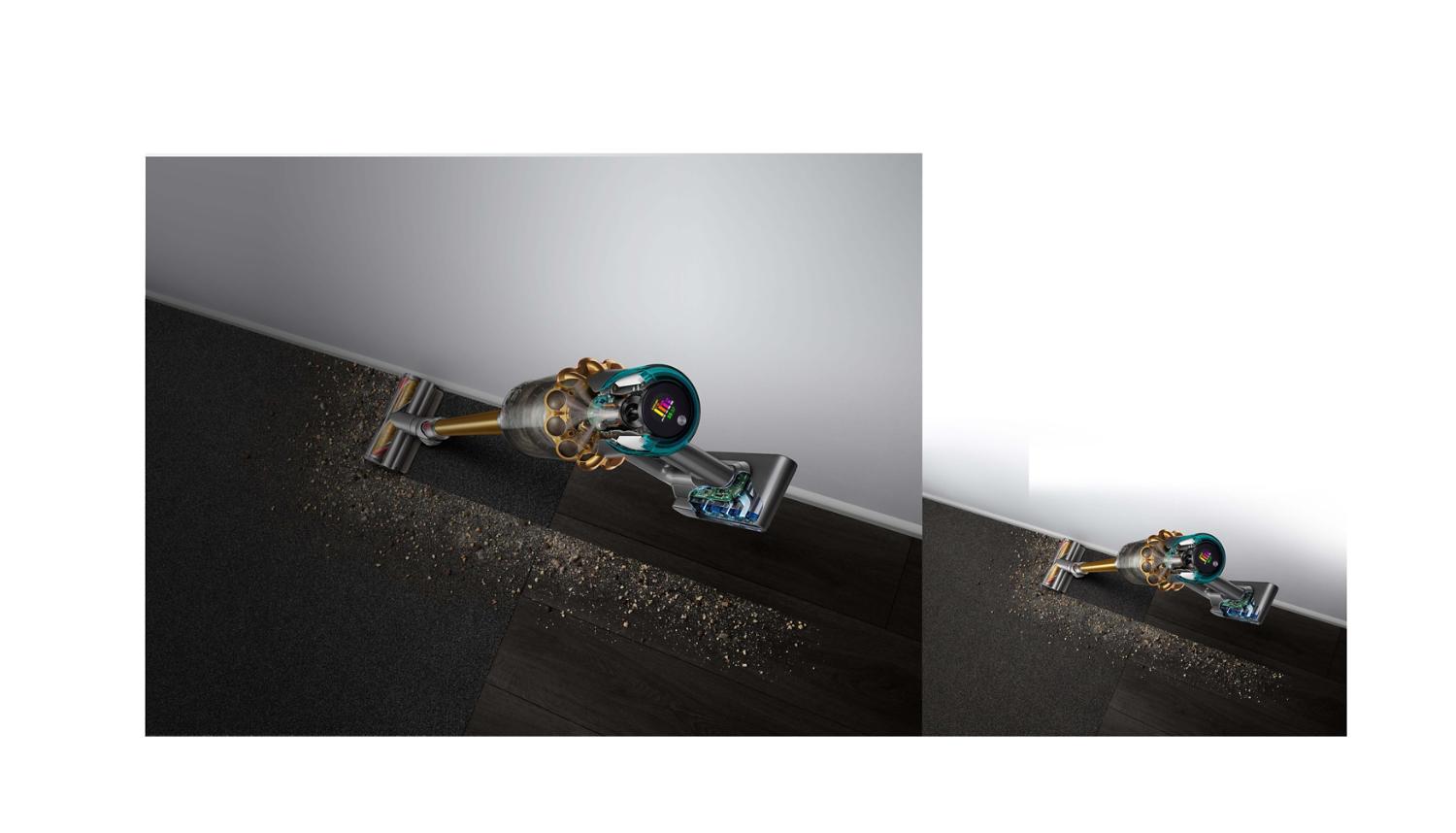Insights | Cleaning | Floor Types
Top tips for cleaning a carpet
Welcome to our Healthy Homes & Workplaces 10-part series. In these stories, we delve deep into the science and engineering behind our machines to reveal our Dyson top tips, tricks and recommendations for keeping your home and workplace clean and healthy though lockdowns and beyond. Find out more on Instagram through #DysonHealthyHome.
From daily dust and debris to stubborn dirt and stains, keeping carpets clean can be an ongoing challenge. With an abundance of experience working on the latest vacuuming technology, Dyson engineers James McCrea and Dr Calum Robertson share their top 5 tips on how to keep your carpet clean.
-

-
Despite the popularity of carpets and rugs in homes around the world, few people are confident on how to clean and maintain them. On top of regular cleaning to prevent the visible build-up of dust and dirt, understanding how to manage embedded fine dust and remove stains can be a challenge.
“At Dyson, we have almost 30 years of research into how best to clean flooring, including carpets,” says James McCrea, Senior Mechanical Engineer at Dyson.
“In our Pick-Up Laboratory, we test how effective our machines are at removing dust, dirt and hair from your home using many different floor types – from industry standard carpets, to tatami matting commonly found in Japan.”
How to clean your carpet day-to-day
To maintain the appearance of your carpet, a vacuum cleaner should be your first port of call.
“Carpets can hide microscopic dust and dirt between their fibers, which can impact your wellbeing. So, it’s important not to wait until your carpet looks visibly dirty before vacuuming,” says James.
“Vacuuming high-traffic areas twice a week and the rest of your carpeted spaces once a week is enough to keep dust and dirt at bay. But there are some engineer tricks you can use to make sure you’re vacuuming in the right way.”
-

-
- Vacuum slowly. Vacuuming slowly gives the airflow and brush bar more time to “agitate” the dust and dirt between the carpet fibers and remove them entirely. It also means you’re more likely to capture invisible allergens* hidden deep in the carpet pile.
- Go over the same spot – but not too often. More passes over an area will give the machine the best chance of cleaning carpet well, but any more than two or three times gives minimal increase, according to our research in the laboratory.
- Use the right accessories. While it may seem like an effort to change tools mid-vacuum, this will help you remove dust you can see, and dust you can’t. Use a Crevice tool to clean hard to reach places round the edge of the carpet, or a Mini-Motorized tool to remove dust buried in thick pile rugs.
- Don’t forget the places you can’t see. While they may not be top of mind, areas under sofa cushions, furniture and in curtain creases can harbour dust and potentially millions of dust mites and their faeces. Once these are disturbed, they can become airborne and easily inhaled. This in turn can trigger allergies, so ensure you don’t neglect them in your frequent cleans. Mini-motorized tools are ideal for hidden corners of soft furnishings, while Soft Brush tools or Combination tools can gently remove dust from curtains and bookshelves.
How to remove carpet stains
Beyond day-to-day cleaning, there are times when carpets need extra attention. Stains can be made up of a number of chemicals or chemical components, so you may need to use a variety of methods to remove them from your carpet. But understanding which type of cleaning products are best for the job can be difficult and potentially dangerous.
A study undertaken by the CDC found that poisonings related to combining household cleaning products surged during the Covid-19 pandemic[1] as people sought to clean their homes with a mix of disinfectants and bleaches.
“While it can be tempting to try and deal with a stain as quickly as possible with as many cleaning products as possible, it’s vital to not mix cleaning products,” says Dr Calum Robertson, Chemical Research Scientist at Dyson.
“When dealing with a stain on your carpet, it’s important to start as lightly as possible – and to always read the label of the product you’re using!
“Starting with the lightest treatment possible, then slowly trying more abrasive methods can help you remove stains properly, safely and avoid damaging your carpet too.”
- Vacuum the stain – if its dry. Avoid wiping substances like ground coffee and spices - water can make the stain worse and even permanent. If you have a surface level stain or spill, try vacuuming it first – unless it’s already a wet stain. Moisture can have a negative impact on the mechanics of your vacuum.
- Start slowly with soap and water. Carpets are usually dyed fabric, so if you use a product that is too strong on a stain, you risk removing the carpet dye too. Start by delicately blotting the stain with a surfactant, which is typically warm water and soap. This will work to break down or emulsify oil stains like grease or butter and won’t put your carpet at too much risk. Watch out for delicate rugs though, as the dyes could be impacted by certain soaps.
- Try a biological treatment. For protein, starch or lipase-based stains, like blood, grass and chocolate, an enzymatic solution can work well. Enzymes work by breaking down large molecules into smaller, more soluble ones. Use warm water and biological laundry detergent and gently blot the stain until it has dissolved.
- Use bleach-based products sparingly. Some stains, like tea, coffee or red wine can discolor your carpet and so you may need to apply a bleach-based product – but only in sparing amounts. Always test the product on a more inconspicuous bit of carpet first and be patient when cleaning. Applying too much at once can cause irreversible discoloration to both the stain and your carpet.
Read more
Discover Dyson
*Allergens refers to non-living material.
1 American Cleaning Institute (2020), National Cleaning Survey Results: Spring Cleaning Data. Available at: https://www.cleaninginstitute.org/newsroom/releases/2020-aci-national-cleaning-survey-results-spring-cleaning-data
9 Wechsler, Charles J et al. (2011) ‘Squalene and cholesterol in dust from Danish homes and daycare centers’, Environmental Science & Technology, 45 (9) 3872-3879.
Disclaimer
The information provided in this article is not intended as a product claim. Refer to individual Dyson models for specific capture claims.
The contents of dyson.com, such as text, graphics, images, and other materials created by Dyson or obtained from Dyson licensors, and other materials contained on the Dyson.com Site (collectively, "Content") are for informational purposes only. The Content is not intended to be a substitute for professional medical advice, diagnosis, or treatment. Always seek the advice of your physician or other qualified health provider with any questions you may have regarding a medical condition. Never disregard professional medical advice or delay in seeking it because of something you read on the Dyson.com Site!
Dyson does not recommend or endorse any specific tests, physicians, products, procedures, opinions, or other information that may be mentioned on the Site. Reliance on any information provided by Dyson, Dyson employees, others appearing on the Site at the invitation of Dyson, or other visitors to the Site is solely at your own risk.



